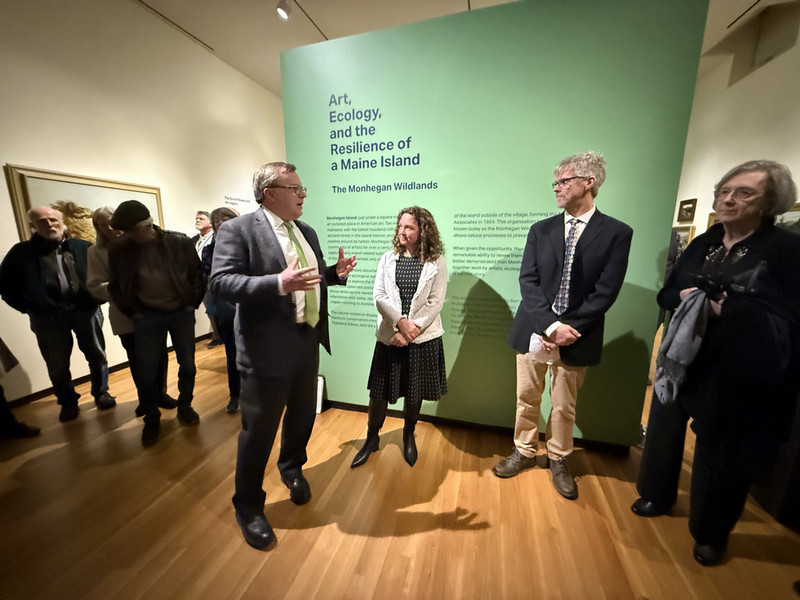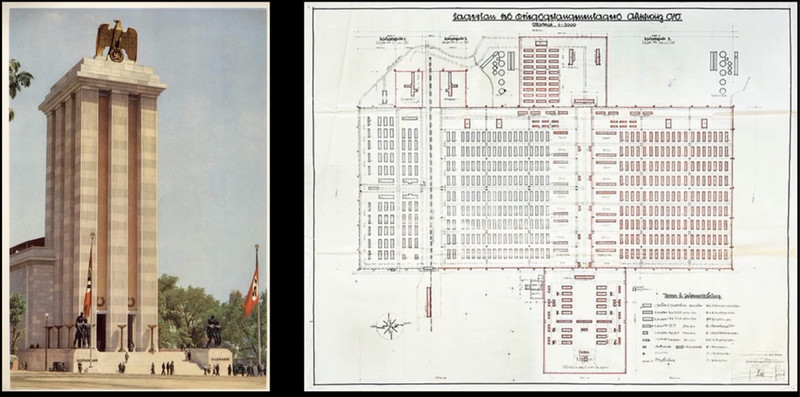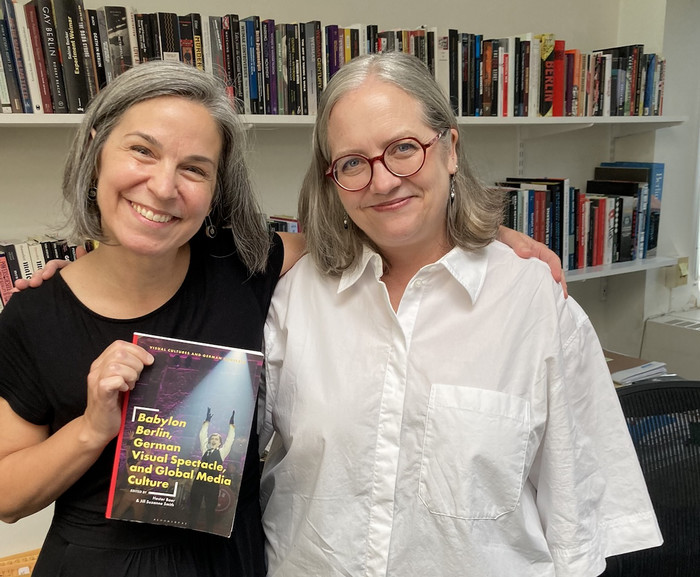Museum Exhibition Focuses on Role of Language in Art
By Chris Zhang ’25The Bowdoin College Museum of Art's Turn of Phrase: Language and Translation in Global Contemporary Art scrutinizes the critical and creative functions of language since the 1980s.
Turn of Phrase features works from twenty global artists, including pieces by Marta María Pérez Bravo, Song Dong, Barbara Kruger, Glenn Ligon, and Xu Bing, along with newly acquired works by Luis Camnitzer, Jeffrey Gibson, and Hung Liu.
Curated by Post-Baccalaureate Curatorial Assistant Sabrina Lin '21, the show is on view at the Museum through June 4.
"The central questions raised by the exhibition are: What is language? And, how do language and art interact and inform each other using the lens of translation?" Lin said.
Turn of Phrase received a glowing review in the Portland Press Herald. Critic Jorge S. Arango writes that the exhibition "is, quite simply, the most eloquently curated show I have seen in years." He recommends visitors budget plenty of time to see all of the "exquisite work."
"I'm trying to investigate the very diverse and formative ways in which artists from around the world really understand, negotiate, contextualize, and even challenge the use of language in art," she added.
Turn of Phrase incorporates artworks both from within the Museum and from partner institutions and private collections. While researching the collection, Lin considered how works in the permanent collection add to our understanding of language, such as Glenn Ligon's Untitled (Crowd/The Fire Next Time) (2000). This piece raises the issue of legibility and the politics of visibility and, juxtaposed with Xu Bing’s esoteric, reconstructed Chinese calligraphy Quotation from Chairman Mao (1955), calls into question who can “read” and access the text.
At the same time, the exhibition also includes several recent acquisitions on display for the first time in the Museum. Jeffrey Gibson’s mixed media work The Anthropophagic Effect, Garment no. 3 (2019) showcases a mode of storytelling by combining political and pop culture references with Indigenous craft style. Hung Liu’s multi-layered Western Pass (1990), combining oil painting, poetry, and multi-media installation, ponders the convergence of history, memory, and identity.
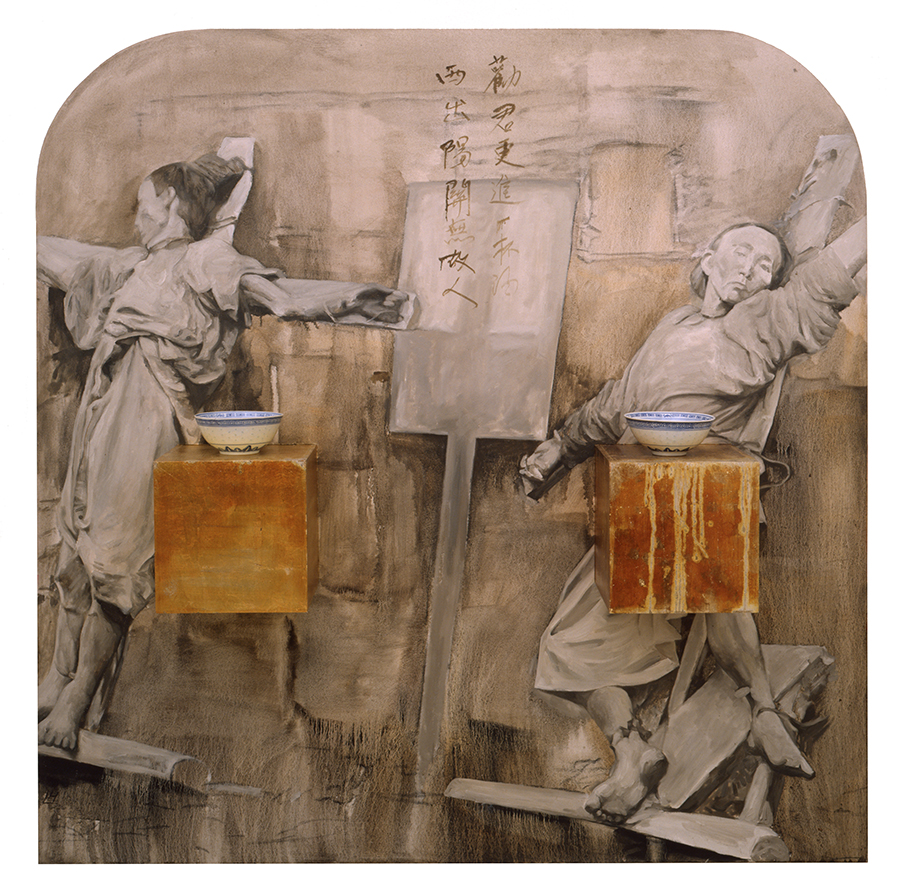
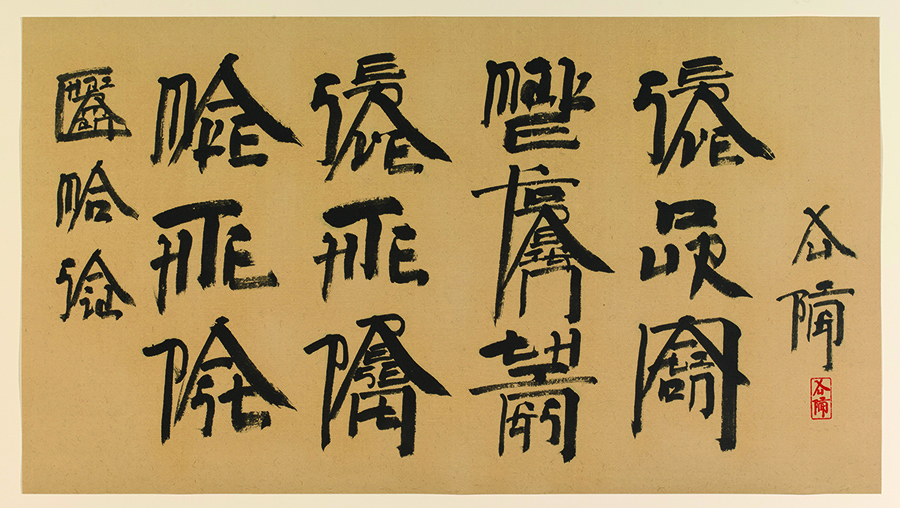
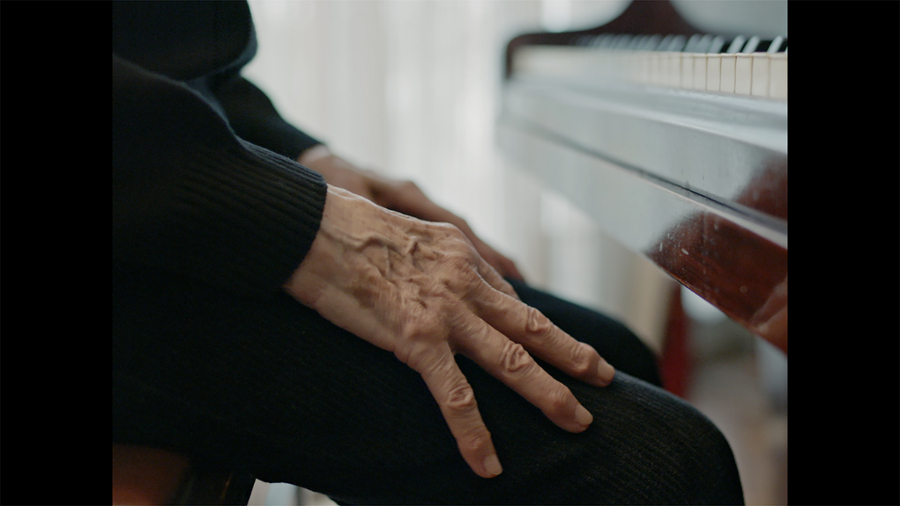
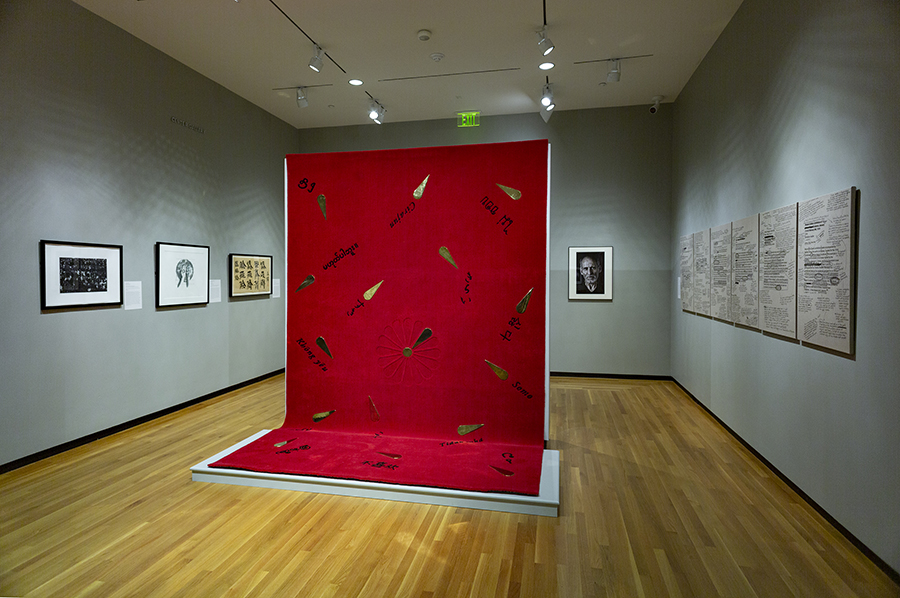
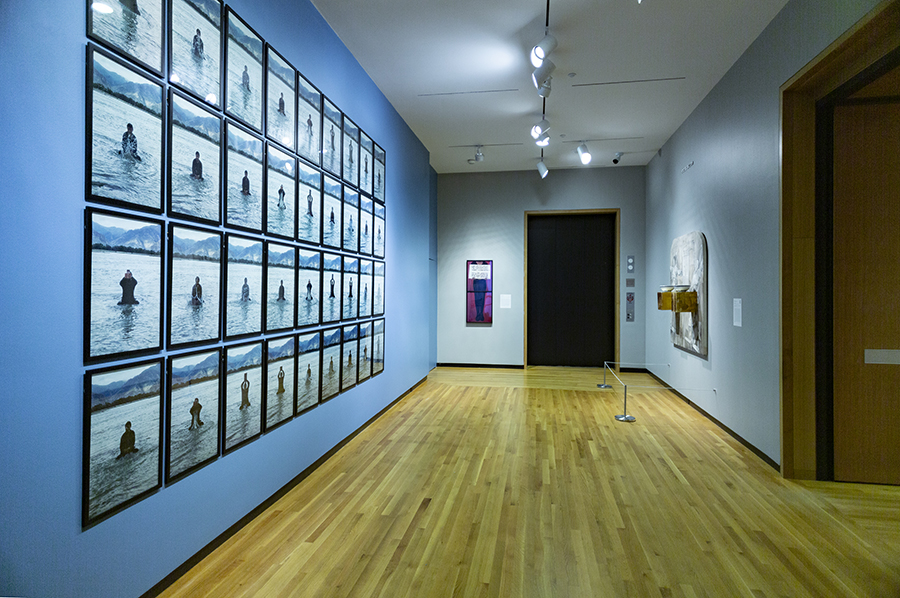
Interdisciplinary Conversations
For Lin, the Museum collection and her personal interests in language and visual arts converge in the exhibition.
With her multilingual background as a Chinese speaker, an English writer, and a scholar of art history and Italian literature, Lin has always had an active interest in language and the visual arts—and the intersections between them.
When she was a student at Bowdoin, she interned one summer at the Museum of Art as the student assistant to the curator. While researching the Kippy Stroud collection with Museum Co-Director Anne Goodyear, Lin looked closely at Loves Me, Loves Me Not, a monumental carpet featuring different Asian languages by Yukinori Yanagi, and Ann Hamilton’s pebbled book, both featured prominently in this exhibition.
Meanwhile, during her internship, Lin regularly gave tours to the public on the 2019 exhibition, Art Purposes: Object Lessons for the Liberal Arts, which highlighted art as a tool for observation, inquiry, and learning in a liberal arts context. She noted that while the themes and intentions of Art Purposes don't correspond neatly to Turn of Phrase, the spirit of collaboration and interdisciplinary research became a major inspiration.
In Lin's senior year, she completed an art history honors thesis that examines immigration, space, and mobility through the lens of contemporary installation art. According to her, the experience of doing the project was an exercise in intellectual rigor and self-driven research—both indispensable to curating Turn of Phrase.
Meanwhile, themes from her honors work also informed her of the power of language and translation not only as a creative tool for artists but also as a productive lens through which art historians and curators could view global contemporary art.
After graduating from Bowdoin with a double major in art history and Italian studies two years ago, Lin accepted the job as the Museum's first post-baccalaureate curatorial assistant. As she began her work, her attention landed on an array of objects that seemed to convey intriguing meanings about communication and language. "It's a really happy coincidence that my interests in art melded with what the Museum had in its collection," she said.
“An exhibition like this has a home at an institution like Bowdoin. It works at this place, in the liberal arts context, and we have the right pieces to support it.”
—Sabrina Lin
In addition to her close collaboration with Associate Professor of Art History and Asian Studies Peggy Wang, Lin extended the conversation across campus during the curating process, inviting faculty and students from various disciplines to approach the concept from different angles.
Early on in her research, Lin discussed the practice of translating with students in a course taught by Sebastian Urli, assistant professor of Romance languages and literatures, "Shifting Forms: The Art of Creative Translation." During the class visit, translation was examined through the lens of poetry and its relation to individuality. Whereas for Mary Hart, visiting assistant professor of art, this exhibition became a case study for her printmaking class to demonstrate the process of creating art.
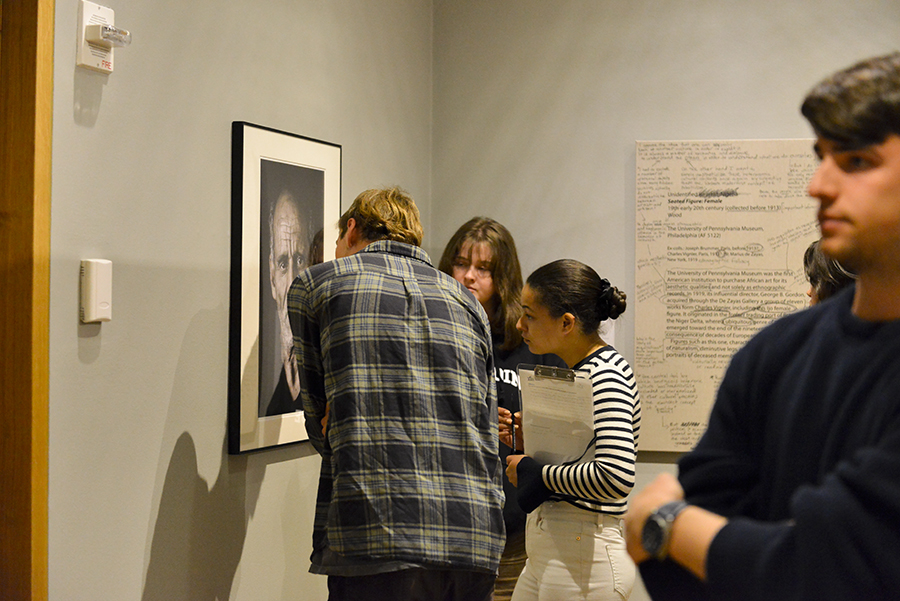
The Museum works with departments across the campus to facilitate teaching with its rich, encyclopedic permanent collection, rotating exhibitions, and educational programming. Since its opening, Turn of Phrase has hosted over a dozen class visits.
In addition to these discussions in the classroom, Turn of Phrase is also about celebrating multilingual and multicultural identities. On Saturday, April 15, Lin and student ambassadors at the Museum led a series of family activities in collaboration with Multilingual Mainers. Directed by Associate Professor of Romance Languages and Literatures Margaret Boyle, Multilingual Mainers fosters early language learning and supports cross-cultural dialogue, a mission that is shared by Lin in curating the exhibition.
"There are all these very vibrant connections and conversations that have happened both before and also since the show's opening," Lin said."Essentially, [Turn of Phrase] is a show about how the liberal arts function in the twenty-first century and how we use art to inform critical thinking and creative disposition."

